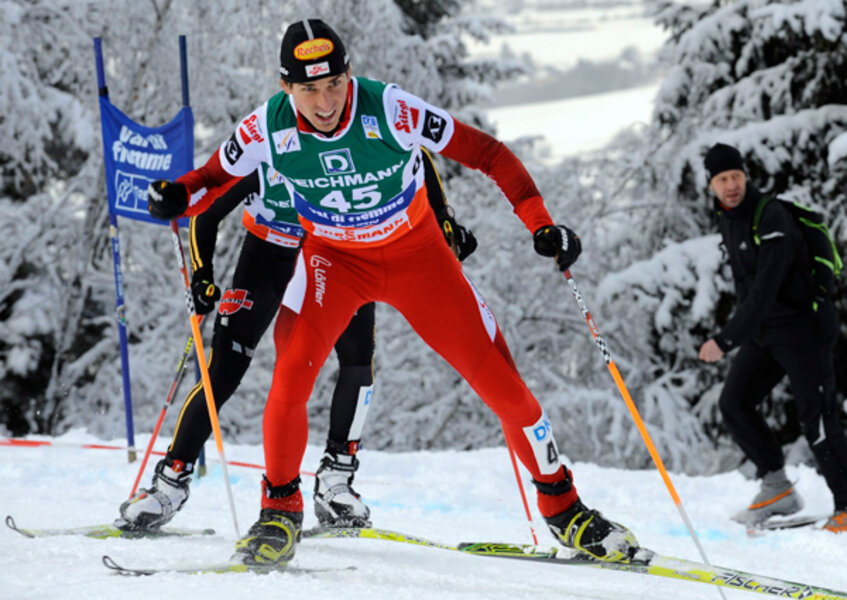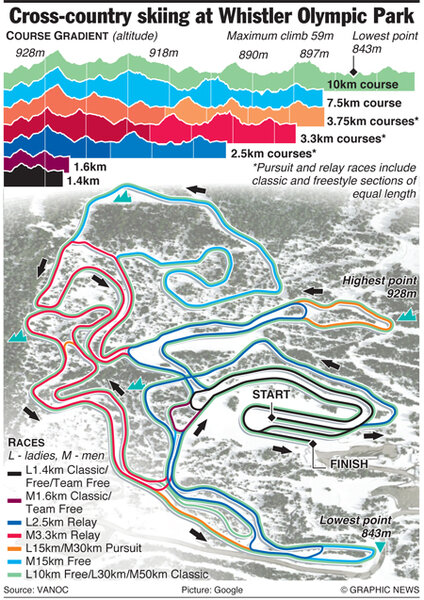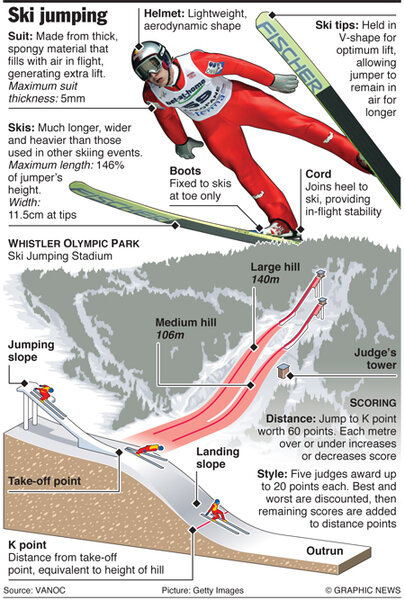Vancouver 2010 Olympic Games: Nordic combined
Flying unaided by machine or makeshift wings, Nordic combined skier Felix Gottwald and a trio of US athletes could make history at the 2010 Olympics. Gottwald, an Austrian, is well placed to set the all-time record for medals won in consecutive Olympic events, while the American men could win the country's first-ever medal in a sport once dominated by Norwegians.
Who to Watch
Felix Gottwald, AUT (see video)
A year before the Olympics, Felix Gottwald was at World Championships – wearing a journalist's cap, not a jumper's helmet. Inspired by the impressive comeback of US Nordic combined athlete Todd Lodwick, who won gold in two individual events, Gottwald announced in May 2009 that he was returning to the sport in time for the Vancouver Olympics. Coming off two years as a journalist, Gottwald has quickly returned to his old form, often finishing in the top five on the World Cup this season.
As a boy, Gottwald says he wasn't very talented athletically but learned at a young age to patiently pursue his goals. Six years after his Olympic debut at the 1994 Lillehammer Olympics, he had a breakthrough season, winning his first World Cup race. With 14 world championship and Olympic medals hanging at home, the four-time Olympian is now Nordic combined's most decorated athlete. If Gottwald medals in the first two events at these Olympics, he could set a new record for the most medals won in consecutive Olympic events – something Canadian speedskater Cindy Klassen could also do.
A native of Zell am See, Austria, Gottwald now splits his time between there and Ramsau, a quintessential Austrian town at the base of the Dachstein glacier – and a favorite summer training spot for Nordic skiers. Fans can read about his favorite foods (spaghetti), hobbies (biking, golf, and more), and athletic journey on his website or in his autobiography, "Felix Gottwald."
Todd Lodwick, USA
Along with teammates Johnny Spillane and Bill Demong, Lodwick is part of a team that is likely to win America’s first Olympic medal in the sport. He came back from retirement to win an unprecedented two gold medals at Worlds last year. See how Todd trains
Americans to watch: Together with biathlon, Nordic combined is one of two Winter Olympics sports in which America has never medaled. But after dominating World Championships last year, the trio of Demong, Lodwick, and Spillane is headed to Vancouver with more than enough momentum for multiple medals.
Event Details
Click here for schedule and results.
The three Nordic Combined events are:
- Individual: Competitors start the day with two jumps on the Normal Hill (designed to accommodate jumps of up to 105 meters), followed by a 15-kilometer (9-mile) cross-country ski race. The starting order of the race is determined by the results of the jumping portion, with the winner starting first and the rest of the field staggered according to a formula that converts jumping points into a time penalty. The first skier to finish wins.
- Sprint: Athletes compete on a hill designed to accommodate jumps of up to 140 meters, and race only 7.5 kilometers.
- Team Event: Each member of the four-man teams jumps twice on the large hill. The team results are added together and dictate the team's starting order in the cross-country portion, which is contested as a 4 x 5km (3.1 miles) relay. The team whose final skier crosses the line first is the winner.
History
Traditionally a Norwegian sport, Nordic Combined has been part of the Olympics since the inaugural Games in 1924 for men. The marriage of two very different sports -- ski jumping and cross-country skiing – the Nordic Combined demands both explosive power and endurance from its athletes. The cross-country skiing portion can start as soon as 35 minutes after the jumping event, demanding versatility and a quick shift in the athlete’s focus.
Since women are still not allowed to ski jump at the Olympics, they don’t compete in Nordic Combined either. Those two disciplines are the only two that remain closed to female athletes in either the Summer or Winter Games after years of improvements in gender equality.
Nordic Combined Lingo
- Connection Cord: part of the binding, attaching the ski to the boot and preventing the skis from wobbling during the jump.
- K-Point: the distance from the takeoff that is equal to the height of the hill. Judges reference this line to determine the amount of distance points awarded to a jump.
- Outrun: the flat area past the steep landing section where the athletes slow down and stop.
- Telemark Position: a landing position in which the skier lands with one ski in front of the other, lunging forward.
Sources: nbcolympics.com, vancouver2010.com







